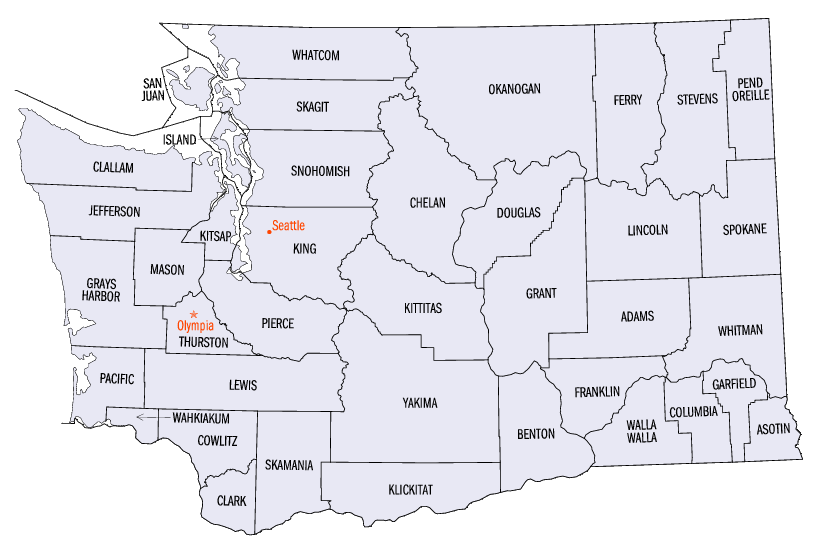By Alex Brown, Stateline

In Colorado’s rural Eagle County, local commissioners are setting their own rules for reopening the area economy. They’re doing so with the backing of Gov. Jared Polis, a Democrat who granted the county Colorado’s first exemption to statewide stay-at-home restrictions.
Home to popular ski resorts, Eagle County saw one of the state’s first COVID-19 outbreaks, with more than 400 cases reported in March. The county, and its nonprofit health care system Vail Health, responded aggressively.
By the start of April, case counts had slowed to single digit numbers each day, testing was widespread and fast, and local health care facilities had plenty of available capacity.
County Commissioner Matt Scherr credited Vail Health with preparing and establishing supply chains back in January, giving the county a leg up. The testing success in particular will allow the county to gradually loosen restrictions while closely watching the outcomes of those rollbacks.
“As long as we can maintain that volume of testing and rapid test results, it does give us that data which is almost real-time,” Scherr said. “It allows us to test our public health orders.”
Counties across the country want the same control, even as scientists project cases and daily deaths to rise in the coming weeks. From California to Washington to North Carolina to Michigan, local officials are asking their state governments for the authority to loosen restrictions.
Many counties seeking more local flexibility are smaller or rural and so far have been relatively unscathed by the virus. Leaders say their paralyzed economies are causing greater harm than the pandemic itself.
But some experts have cautioned that the pandemic is beginning to gain a foothold in many rural areas, and unlike Eagle County, most rural counties are still weeks away from their peak caseloads. Many of those areas have higher-risk populations and limited access to health care resources.
The case count in rural counties is about half the national average, according to rural news site The Daily Yonder, but the infection rate is rising much faster than in heavily populated cities, which are seeing a decline.
Nationally, an internal White House projection obtained by The New York Times forecasts that daily death counts will nearly double by early June as some areas continue to see increasing cases and economies begin partially reopening.
‘Proceed at Your Own Risk’
Many states already have signaled they will reopen on a regional or county-by-county basis. But those decisions largely will be made by governors, not local officials. Colorado appears to be one of the first states so far with plans to give counties some degree of control.
On Friday, Washington Gov. Jay Inslee announced that 10 small counties with low rates of infection could apply for exemptions to the state’s stay-at-home orders, allowing them to move ahead to the next step of a phased reopening plan. Later in the month, the Democrat said, more counties may begin applying to move up their timelines.
Oregon is maintaining state-level authority but is asking each county to draft its own plan to reopen. Counties must show a decline in cases and meet thresholds for testing, contact tracing and health care capacity. At least eight counties in the state already have sought state approval for their plans.
Meanwhile, Pennsylvania has divided the state into six regions that will move forward on different timelines determined by state leaders. New York has assigned different state officials to oversee the reopening of different regions. Virginia also may open region by region.
In Colorado’s Eagle County, one of the first local governments to be given charge over restrictions, leaders caution that reopening won’t be simple. Officials expect case numbers to increase as they ease lockdowns, and they’ll be watching closely to make sure the local health system can stay afloat.
County residents still must limit gatherings to 10 people, and businesses that wish to reopen must follow strict social distancing protocols. Travel within the county is still limited to local residents.
Scherr said the preparation of the local health care system, and a robust testing and tracing system, has given the county a head start. Without those factors, the county wouldn’t have had a chance to open on its own, he said, and most places still lack the testing required to safely reopen.
“A lot of communities still struggle with availability of all the things you need for this,” he said. “Testing, that really is their limiter.”
Eagle County is the first to meet Colorado’s threshold for setting its own rules. Counties that want to take back control must show a 14-day decline in cases and submit a plan approved by local elected leaders, health authorities and hospitals.
If those conditions are met, Polis spokesperson Conor Cahill said, “local governments can relax guidelines more than the state.”
For now, Eagle County’s guidelines closely resemble the revised statewide order Polis outlined at the end of April. STATELINE STORY April 10, 2020With No U.S. Plan to Return to Normal, Some States Are Creating Their Own
In other counties seeking authority to reopen, leaders say that one-size-fits-all restrictions force them to live by rules written for harder-hit urban areas.
“I equate us more to South Dakota than I do to Los Angeles,” said Ron Sullenger, a supervisor in Northern California’s rural Sutter County, which has seen 28 positive cases and two deaths so far among its population of nearly 100,000.
Sullenger was among the leaders from six counties in the region to plead for more local control in a letter to California Gov. Gavin Newsom, a Democrat.
“At this point, given the COVID-19 numbers locally — and our enhanced healthcare capacity — we ask you to allow our counties to exercise local authority to implement a careful and phased reopening of our local economies,” the signers wrote April 24.
A spokesman for Newsom did not respond to a request for comment. On Friday, Dr. Phuong Luu, health officer for Yuba and Sutter counties, declared that many local businesses could reopen, defying the statewide order, but urged owners to seek “private legal counsel” before proceeding.
Sullenger, speaking before that announcement, said Sutter County is confident it can handle the virus without state oversight, praising Luu’s leadership, the local health care system and recent progress in testing capacity.
“I think all we’re hoping for is that the governor will look upon us and say, ‘You don’t have the high [infection] rate, so proceed at your own risk,’” he said.
‘1,100 Different Rules’
Not everyone thinks counties or other local governments should be left to their own devices. Some local officials say a patchwork approach could be confusing for residents, and any county that opens up early could be overwhelmed by visitors from neighboring areas eager to take advantage of reopened businesses.
There’s also concern that such an approach would create a race to the bottom, pressuring counties to reopen their economies as they see their neighbors getting back to work.
“If one county does one thing and one county does another, there’s going to be some confusion among the population,” said Randy Phiel, a Republican commissioner in Pennsylvania’s Adams County. “I don’t see how a county-by-county situation is workable, because you’re going to have cross-mixing between the populations of those counties.”
Pennsylvania Gov. Tom Wolf, a Democrat, has announced plans to reopen the state by region. Adams County is assigned to a 13-county south-central region, which may be poised to begin loosening restrictions in the coming weeks based on criteria set by Wolf.
Phiel added that Adams County, like many in Pennsylvania, does not have its own health department, another reason it’s unprepared to take charge of the pandemic response. He favors the regional plan, preferring to wait until all nearby counties can be declared safe.
“I have no idea how one rationalizes opening when counties around you have a significant large population of confirmed cases,” he said. “I don’t think there’s any police department that can control that flow unless you put up gates at your county lines.”
In Illinois’ Winnebago County, the leaders of five different municipalities have asked Gov. JB Pritzker, a Democrat, for more local control. But Rockford Mayor Tom McNamara, who leads the county’s largest city, thinks that request is folly, noting that the state has more than 1,100 municipalities. Rockford, which sits just outside of the Chicago metropolitan area, is the fifth-largest city in the state.
“We’re going to have 1,100 different rules? That’s nonsense,” said McNamara, a Democrat. “There’s so much crossover that you can’t have city-by-city and even county-by-county [restrictions].”
Regardless of who’s calling the shots, McNamara added, the region is not ready to reopen safely, and he’s troubled by nearby leaders who are calling for business to reopen.
“Here in our area, just in the last week our cases have almost doubled and we’re still waiting on half of our tests back,” he said. “I do wish it wasn’t political to do the right thing.”
Illinois Department of Public Health figures show Winnebago County has seen 579 cases and 16 deaths. According to the county’s website, it has conducted nearly 4,200 tests, and more than 2,000 results are pending.
Acting Alone
While states consider some counties’ requests for authority, they’re dealing with other counties that are already acting in outright defiance. Colorado’s Weld County, an agricultural area just north of Denver, declared itself open for business against the advice of its top health official. The county has one of the state’s highest rates of infections and deaths.
Unlike Eagle County, it does not actually have the authority to do so, said Cahill, the Polis spokesman.
“Counties who are out of compliance are in jeopardy of losing state emergency preparedness grants,” he said in an email to Stateline.
Others, including Washington’s Franklin County, in the state’s rural eastern region, North Carolina’s Gaston County, next door to Charlotte, and California’s Modoc County, bordering Oregon and Nevada in the state’s northeast corner, have made similar proclamations.
State officials have warned that counties can’t overrule statewide restrictions and that attempts to do so may put local leaders — and the businesses that follow their lead — in legal jeopardy. STATELINE STORY April 27, 2020Will Child Care Be There When States Reopen?
Local Strategies
U.S. counties range in population from 10 million to fewer than 100. Their authorities and responsibilities — not to mention their resources — vary widely by state. So there’s no simple answer to whether counties as a whole are equipped to set their own pandemic restrictions. But some feel they’ve earned the chance to try.
“It’s hard to put a plan together when you don’t have permission to do it,” said Jack Bright, a commissioner in North Carolina’s Onslow County. “The county level [government] is in a better position to make that decision because we’re more in touch with the people.”
Onslow County, home to some 200,000 residents near the state’s coast, has seen only a smattering of cases, and all but a handful of patients have recovered. Leaders say they’re testing a high volume of residents and returning results within 48 hours.
The local hospital system has a large capacity of beds and personal protective equipment, according to the county’s health director, Kristen Hoover, and the county has reassigned staff to conduct contact tracing and monitoring. Those checkpoints all align with the steps national public health experts say are key to reopening.
Hoover said Onslow County would like to begin reopening some businesses, while requiring strong safety measures. The county has closed the parking lots at its beaches, and as the weather gets warmer, the community will also have to decide how much access it can safely allow.
“We’d want to be able to continue social distancing, have a threshold for occupancy of various buildings, provisions for routine and frequent disinfection, shielding at cash registers and encouraging the use of masks by the public,” Hoover said.
Those guidelines could help the county begin slowly rewinding previous closures, she said, backstopped by a hospital system that she said is very well-prepared if there were to be a rise in cases.
A request for comment from the office of Gov. Roy Cooper, a Democrat, was not returned by publication time.
In Michigan’s southwest corner, Berrien County leaders have asked Gov. Gretchen Whitmer, a Democrat, for more local control. Commissioner Mac Elliott, a Republican, called on the state to release a trove of data it’s using to guide decisions, including information about nursing home cases, hospitalizations and respirator usage.
“It is difficult to understand why we are not allowed to at least partly base our re-opening strategy on local facts and trend lines,” Elliott said in an email to Stateline. “We can do this without causing permanent damage to local businesses and families, if the Governor immediately provides for local and regional flexibility.”
Whitmer’s office did not respond to an inquiry from Stateline.
Stateline, an initiative of The Pew Charitable Trusts.


